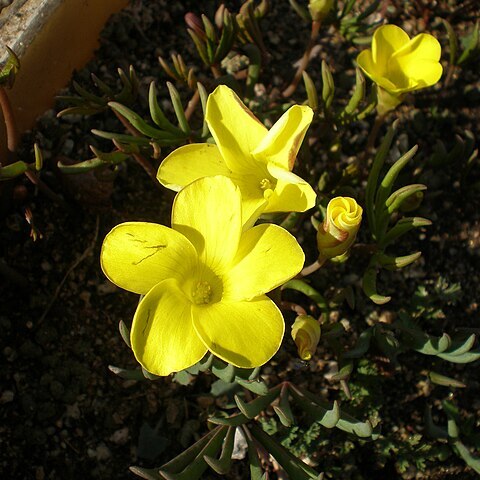Acaulescent or rarely shortstemmed, fleshy geophyte, 30-250 mm tall. Bulb tunics soft, thin, pale brown. Leaves spreading, petiole articulated and with a cushion-like apex and a large brown scale-like base, leaflets (1)2-12, linear to obovate, often folded, leathery, glaucous. Flowers 1 per peduncle, yellow, white or lilac, with yellow tube.
A herb that keeps growing from year to year. It has bulbs and rhizomes. The leaves near the base are jointed. There are 2-12 narrow leaflets. These are often folded length-wise. The flowers are yellow. They occur singly.
Acaulescent geophyte. Leaves trifoliolate, leathery, glaucous, petioles articulated and with large, brown stipules, leaflets (1)2-12, linear to obovate, conduplicate. Flowers yellow, white or lilac.

